St John's Wood Park 1840 - 1901 residents
1861 census
The residents in the 1861 census do not seem to add to St John’s Wood’s reputation for being the place where artists or writers lived. There were five general merchants, a hatter, a silk and ribbon manufacturer, and George Maberley, a coachbuilder, whose son went on to live in Clifton Hill after his marriage. There were three gentlemen, two well-to-do widows, a landed proprietor and two independent men. A land agent, a dentist, a stockbroker, a proctor (Edward Toller 1791 – 1872) were also there, and at No 10 there was a boarding school for nine boys aged between 8 – 12, looked after by a headmistress and three governesses, a cook and two housemaids. The Minister of the French Protestant church at St Martin-le-Grand lived there, as well as Mr Twentyman, and Mr John Gardner, then listed as a lamp and chandelier manufacturer, but later a large scale property owner, and famous collector of prints of London.
An artistic resident
Perhaps one resident can be called artistic: Edward Colville, registrar in the Court of Chancery,and his six children lived at no 17. Recently a handwritten notebook Thesaurus gravis et jucosus, or Specimens of British Poets, dated 1825, was up for sale, containing poems written by Colville and his friends. There were large families living in these large houses – two with 7 children, two with 6 children, and three with 5 children. There may have been other children away at school when the census was taken, and nearly everyone who had young children was employing a nurse and, perhaps, a governess, as well.
1881 census
Generally, families seemed smaller in the 1881 census; of young children under 18, three families had four children, five had three children while two had two children and one had only one child. Seven houses had older children living with their parents. Five of these houses were empty on the night the census was taken and were being guarded by servants as caretakers.
Anyone looking for artistic connections in the 1881 census is again in for a disappointment; the road was inhabited by business men and merchants – 3 dealing in silks, 3 in wine, and 2 in diamonds. One had been born in Russia but became naturalised, and one born in Germany who was, also, naturalised.
There was still the school at no. 10, with a schoolmistress, 3 governesses and 9 boys aged 8 – 12, and two clergyman, one being Henry Samuel Eyre. There was a colonial broker, an ex-secretary to the Board of Customs, and various gentlemen, and gentlemen’s widows.
Mrs Henry Wood (1814 – 1887)
The famous authoress, at no 16 . Born Ellen Price, she married Henry Wood, in 1836, and spent 20 years in France where he was in the banking and shipping business. She took to writing to support her family of four children when her husband’s business failed, and they had to return to England. She wrote over 30 novels, including East Lynne, known still for the famous quote, Dead and never called me mother, though this was not in the novel but in the stage adaptation. She also edited and wrote for a magazine called Argosy. After her husband’s death, she lived at 16 St John’s Wood Park from 1866 – 1887 and, in the 1881 census, is sharing it with her 37 year old son, Arthur, and a cook, two housemaids and a dressmaker. She amassed a fortune of over £36,000 at the time of her death.
Blondin
practised his tight-rope walking, which enabled him to cross the Niagara Falls. in the garden of a house that backed on to Mrs Wood’s.
Emily Perrin
was perhaps one of the most interesting inhabitants . She lived at no 31 with her parents, brother and little brother and sister. She was an undergraduate at Girton College Cambridge, studying mathematics. The Educational Times was first published in 1847 to help people entering the teaching profession. The editors set problems and asked for solutions: 1.3% problems were submitted by women, but more than 3% of solutions came from women. Emily submitted 24 solutions, and posed 4 problems between 1885 and 1892, when she proved that if n is a positive integer, A is the sum of the divisors of n whose quotient is odd, B is the sum of the divisors of n having even quotient and C is the sum of the odd divisors of n hence A + B + C. After achieving her first class B.A. she was on the staff at Girton from 1886–1888, and at University College, London from 1902-1904.
Mary Eyre(1847 – 1922)
was a resident who was not enamoured of the place . She lived at no 23, from 1872–1884 and was the daughter of Reverend Henry Samuel Eyre, vicar of All Saints, Finchley Road and she loathed St John’s Wood Park. To this day this road gives me the shivers and I never go through it if I can possibly avoid doing so – it is so dull, so damp and so overgrown with trees, she wrote, in 1904. The house was comfortable but outside it was a patchy stucco abomination like so many in this locality. Despite having loving parents – her dear father was a perfect gentleman and always too kind and her mother took enormous pains with the small ugly garden and made it into a perfect bower of flowers – she was never happy there. She remembered foggy dark winter days in ugly St John’s Wood.
1891 census
In the 1891 census, 10 of the houses were being looked after by caretakers. Coachmen, a gardener, a milkman and a railway porter acted as house-sitters whilst the owners were away. Otherwise, the householders followed the earlier pattern – there were 4 living on their own means, 2 widowers, 5 widows, various merchants (wine, tobacco, wool, hop, cotton,) a colliery owner, a railway manager, a chemical engineer, a stock jobber, a physician and surgeon, and a warehouseman. Ten houses in the road had one or two children under 16, three had three under 16 and one had 4; there were 11 houses with grown up children still at home with their parents. 6 houses had men servants, 2 had governesses, two had ladies maids and one a companion.
Emily Slazenger
lived at 37 with her son Albert and daughter Bella. Albert, and his brother, Ralph, were the founders of the Slazenger sports goods company, in 1881, at a time when the pastime was becoming increasingly popular. A bold move into tennis ball manufacturing led them being appointed official tennis ball supplier for Wimbledon, in 1905, but they, also, manufactured goods for all the popular pastimes of the day like football, and cricket.
Arthur E Smithers
was one of the richest inhabitants. A banker, he had married Ellena Maxwell Twentyman, daughter of the founder of the road, in 1866. They lived at Holmfield with three children, a nurse butler, 2 housemaids , a footman, coachman plus wife and children and a groom. Their son, Collier Twentyman Smithers (1867 – 1943) was an artist who a year later was to share 5 Primrose Hill Studios with artist, John Waterhouse, and was a great friend of artist, Herbert Draper, one of the St John’s Wood Art school painters, who painted Mourning for Icarus. Collier painted A Race with Mermaids and Tritons, in 1895, and the Theft of the Princess’s Swan Skin, in 1896. He exhibited at the Royal Academy, and Walker Art Gallery.
Daniel Francis (1840 – 1921)
was probably an even richer resident who had been born in Liverpool, but went out to Southern Africa and acquired prospecting licenses, in 1869, and discovered diamonds. Francistown in Rhodesia (now in Botswana) was founded, in 1897, and is named after him. He owned mines and extensive land holdings in the area, and became a director of Tati concessions, in 1869, and later a director of De Beers. Two of his children were born in Kimberley and at the time of the census three sons and two daughters are living with him plus a visitor, William Stuttaford. The Stuttaford family had left England to deal in diamonds in Kimberley, but also bought a prime site in Cape Town for their growing department store, which was the forerunner of Stuttaford stores, now found all over South Africa.
One of England’s most famous actors was also living in St John’s Wood Park at this time.
Charles Wyndham (Charles Culverwell)
had been persuaded by his parents to train as a doctor at King’s College, London and in Dublin, but his love of the theatre proved too strong and, in 1862, he appeared on the London stage with Ellen Terry. But no more engagements were forthcoming so he volunteered to join the Union Army in America as a brigade surgeon during the Civil War. He served at the Battles of Fredericksburg, Chancellorsville and Gettysburg, and one winter joined an acting company in New York, under Wilkes Booth (who later shot Abraham Lincoln), where again he was a failure. Next winter, he tried again in New York with Mrs Wood’s company but was so nervous that instead of saying to the heroine “dearest, I am drunk with love and enthusiasm” he stuck at “dearest, I am drunk” and in the uproar bolted from the stage. He resigned from the army, in 1864, to bravely return to the stage in London.
This time his career flourished, and he mainly played in melodramas and comedies, with an occasional stab at Shakespeare. His most successful part was Charles Surface in the School for Scandal. By 1876, he had taken control of the Criterion theatre and produced a long series of plays, being particularly successful in David Garrick, which he played in Germany and Russia to much acclaim. He acted with wonderful naturalness, and his dashing charm appealed to women everywhere.
He had married, in 1860, Emma Silberrad, daughter of a well-to-do German merchant, whose fortune spared Wyndham any fear of the poverty that worried other actors. In the 1881 census he had been living at 45 Finchley Road with his wife, Emma, and nineteen year old daughter Minnie, looked after by a butler, cook and housemaid. His occupation was given as comedian. He travelled with his company three times to America, from 1889 – 1910, and, in 1882, had been the first English troupe ever to reach the West coast.
By 1891, his occupation was actor, and he was with his wife and married son and daughter at the Manor House, St John’s Wood Park, plus valet, page, housemaid and cook. His coachman with wife and six children lived in the attached stables. By 1897, however, he was to separate from his wife; since 1886 his mistress had been his leading actress Mary Moore (wife of playwright James Alberry) and, in 1899, he opened a new theatre called Wyndhams, and Mary became co-manager. He was knighted, in 1902. As a result of his experiences in the American Civil War he helped British disabled service men during the Boer War and First World War with charity performances. Emma died, in 1916, and two months later he married Mary Albery, who was by then a widow. It was noted that as he suffered from nervous insomnia he always walked home to St John’s Wood in order to tire himself out, rather than join other actor friends at the Garrick Club after a performance. Sir Charles died of pneumonia and senility, in 1919, leaving a fortune of £197,000. As well as being a great actor, he had great personal charm which made him a favourite with the audiences.
John Lewis Nathan, aged 33,
was someone else with theatrical connections . He was a theatrical and court costumier, living with his wife, Stella, and baby son, a housemaid, nursemaid and cook at no 20. Actors had to provide their own contemporary costumes and Lewis Nathan, presumably John’s grandfather, had been the first, in 1846, to hire out a stock of liveries from the best families, much bedecked with silver, which enabled the working classes to evade an ordinance forbidding persons of the artisan class from entering the Royal Parks. Two years later, he was hiring out theatrical costumes for men. Then, as now, leading ladies costumes were invariably made rather than hired. Mrs Nathan was still living in St Johns Wood Park, in 1940, when Mr Brown remembered her: a Mrs Nathan who was the chief or should I say chieftainess of Nathans of Panton Street the then famous theatrical costumiers. She appeared to be a fairly elderly lady when I arrived in 1919 and seemed but little older when I last saw her in 1940. The amazing ability to retain her youth was attributed to the fact in earlier years she was said to have had the fashionable Monkey Gland treatment.
Theresa Kellaway a 16 year old concert singer
was another person in the entertainment industry. She was living with her parents at no 43. Her father, William Lemon Kellaway was a builder who had come up from Devon and constructed the south side of Penton Grove, Islington, but his firm went bankrupt, in 1890, so it is slightly mysterious how he could afford to live in St John’s Wood. Theresa eventually married Harry Bluff, a music hall singer, and they were the first people to take a cinematograph show to the West Indies.
Trotman Foster, b 1842
was a colliery owner, originally from Evesham, living with his wife and son, at no 23, He is an example of the way people moved around St John’s Wood, but stayed in the area. In the 1881 census, they lived at 36 Queens Road, while his mother, Ann, a widow, lived in 14 Clifton Hill with two of his sisters who remained there after their mother died. His son, Reginald died in 1955, at 49 Queens Grove.
Mr & Mrs Wilton and their two sons and two daughters
lived at No 29. Henry and his two sons were saddlers and harness makers and they had previously lived in Maidenhead where Emma Fosbury was their cook and came with them to the Wood. By 1901 she had left but her daughter Annie aged 21 was housemaid at No 29. In 1908 Annie married Samuel Brown, who had also been born and christened in Maidenhead, and they later ran the grocery on the corner of Henstridge Place and Ordnance Hill and became the parents of Ken Brown. (See A Lifetime in the Wood)
John Edmund Gardner
the man living at 28 St Johns Wood Park, had acquired the lease in 1851 and lived there until his death, in 1899. His father had been selling lamp oil in the Strand since the end of the 18th century and John described himself as an Oilman and, later, a Gas Engineer, but he was also a property owner on a large scale. When he was 22, he had married Cicely, daughter of a chemist in the Strand, and they had five children.
He had immediately applied for permission to build a conservatory at no 28, and, later, purchased more land to extend his garden to, at least, an acre, running down to Avenue Road plus odd shapes where he tucked greenhouses and fernery. Wilkie Collins used Gardner’s Avenue Rd frontage of a tree hung garden wall in the cab scene of Woman in White. [1] He, also, built an observatory on the top of the house which later became useful for spotting zeppelins, as well as sunsets. One early photo, taken from a dressing room, showed sheep grazing in the Chalk Farm area. From an early age, he had collected, amongst many other things, over 50,000 prints drawings and maps of London. In 1891, John was living with his son, Edmund, and daughter-in-law, Marie, and 2 grandsons, and three granddaughters, plus cook, parlour maid, house maid, lady’s maid and nurse. His son, Edmund, continued to live at no 28 until the lease was lease surrendered, in 1930.
[1] Patricia Champness

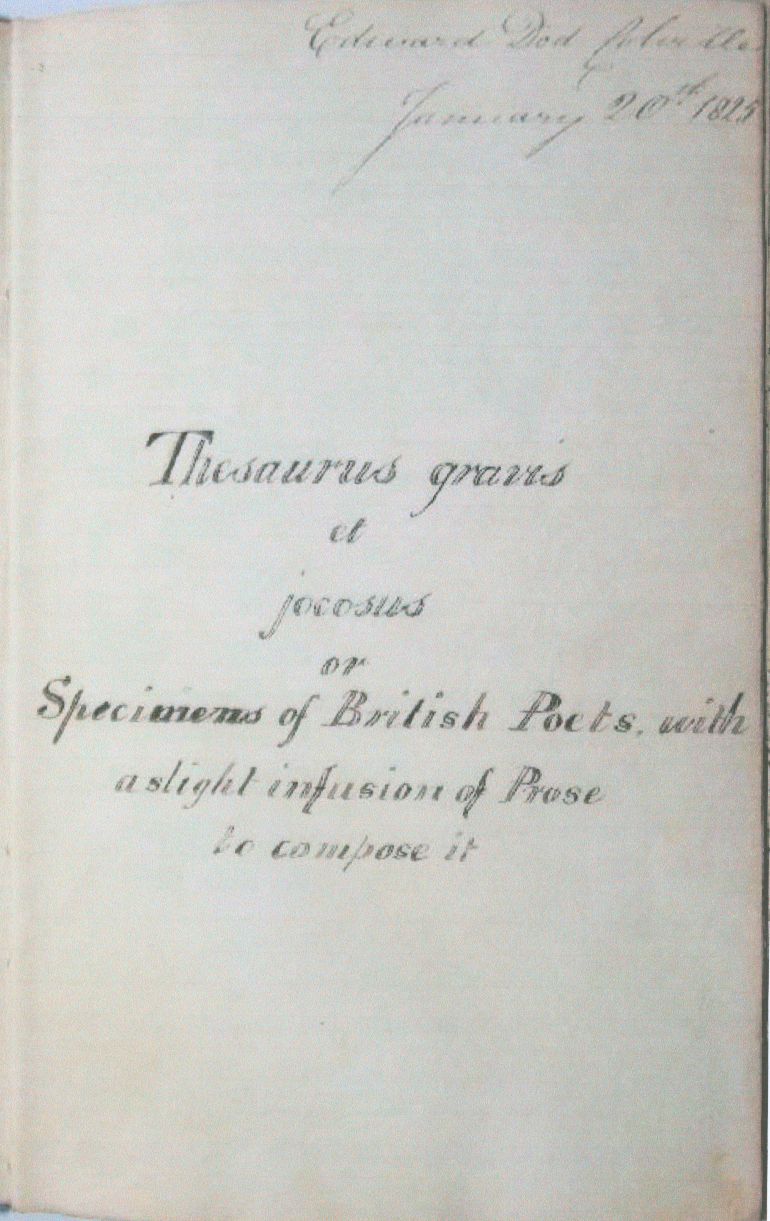
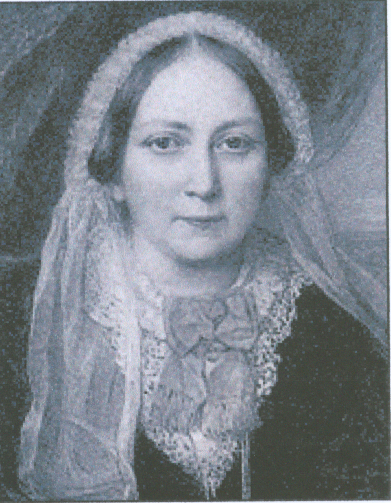
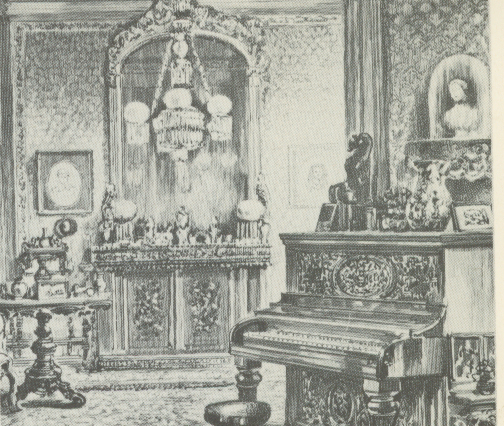
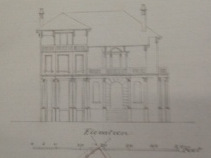
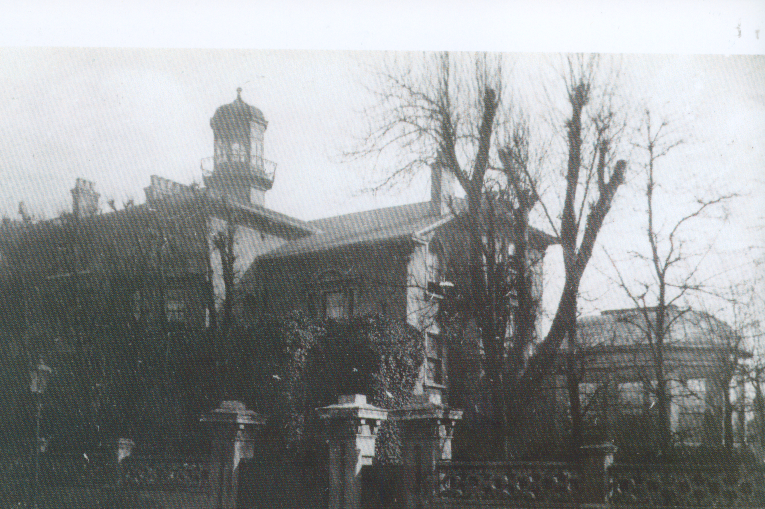
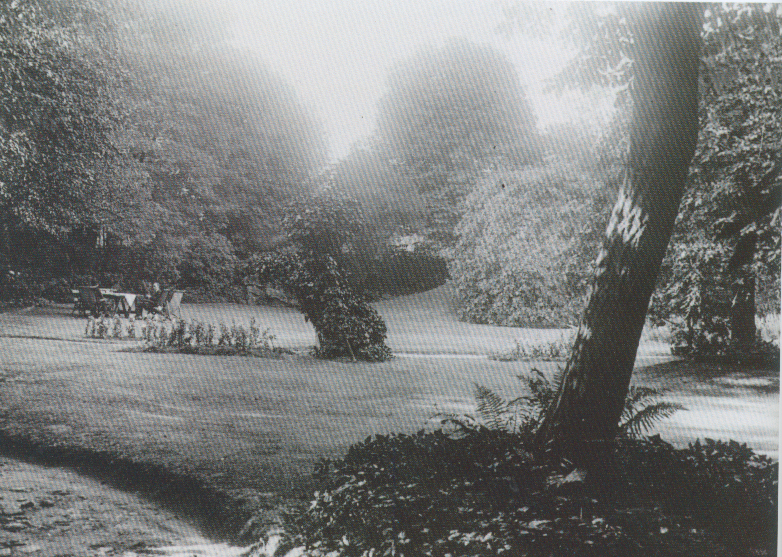
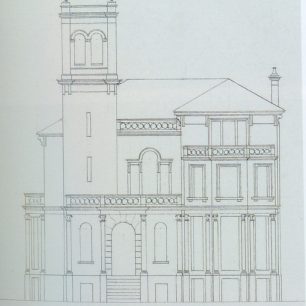
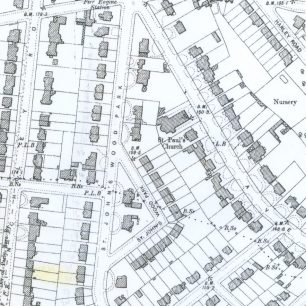

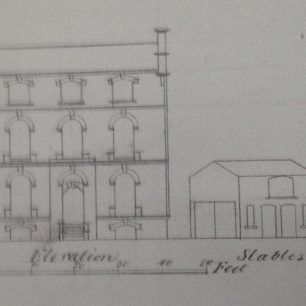
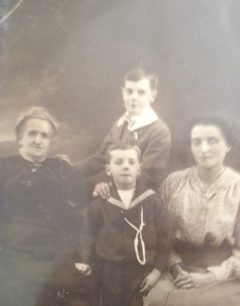
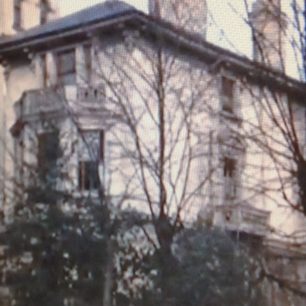



No Comments
Add a comment about this page